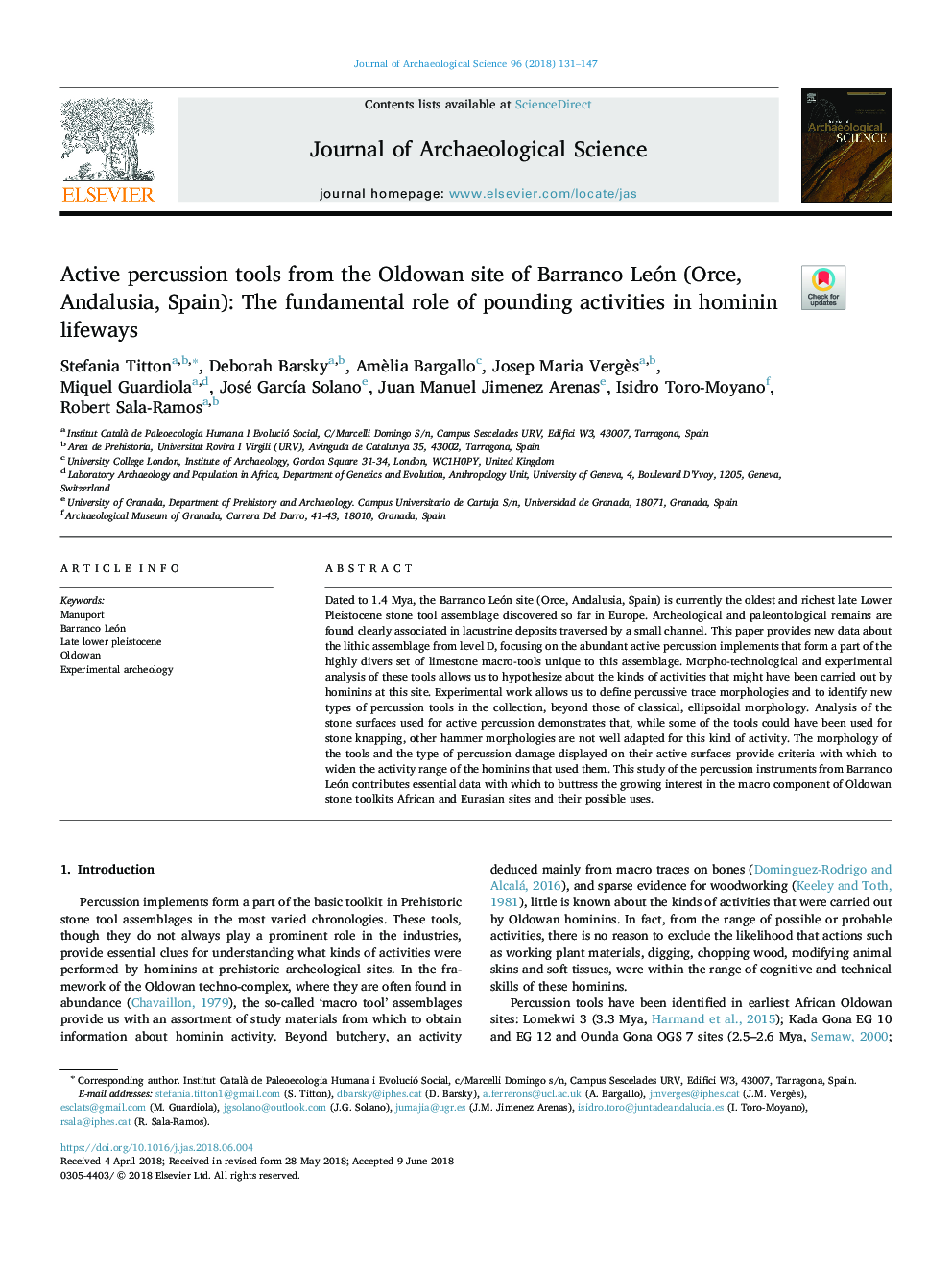| Article ID | Journal | Published Year | Pages | File Type |
|---|---|---|---|---|
| 7440765 | Journal of Archaeological Science | 2018 | 17 Pages |
Abstract
Dated to 1.4 Mya, the Barranco León site (Orce, Andalusia, Spain) is currently the oldest and richest late Lower Pleistocene stone tool assemblage discovered so far in Europe. Archeological and paleontological remains are found clearly associated in lacustrine deposits traversed by a small channel. This paper provides new data about the lithic assemblage from level D, focusing on the abundant active percussion implements that form a part of the highly divers set of limestone macro-tools unique to this assemblage. Morpho-technological and experimental analysis of these tools allows us to hypothesize about the kinds of activities that might have been carried out by hominins at this site. Experimental work allows us to define percussive trace morphologies and to identify new types of percussion tools in the collection, beyond those of classical, ellipsoidal morphology. Analysis of the stone surfaces used for active percussion demonstrates that, while some of the tools could have been used for stone knapping, other hammer morphologies are not well adapted for this kind of activity. The morphology of the tools and the type of percussion damage displayed on their active surfaces provide criteria with which to widen the activity range of the hominins that used them. This study of the percussion instruments from Barranco León contributes essential data with which to buttress the growing interest in the macro component of Oldowan stone toolkits African and Eurasian sites and their possible uses.
Keywords
Related Topics
Physical Sciences and Engineering
Materials Science
Materials Science (General)
Authors
Stefania Titton, Deborah Barsky, Amèlia Bargallo, Josep Maria Vergès, Miquel Guardiola, José GarcÃa Solano, Juan Manuel Jimenez Arenas, Isidro Toro-Moyano, Robert Sala-Ramos,
